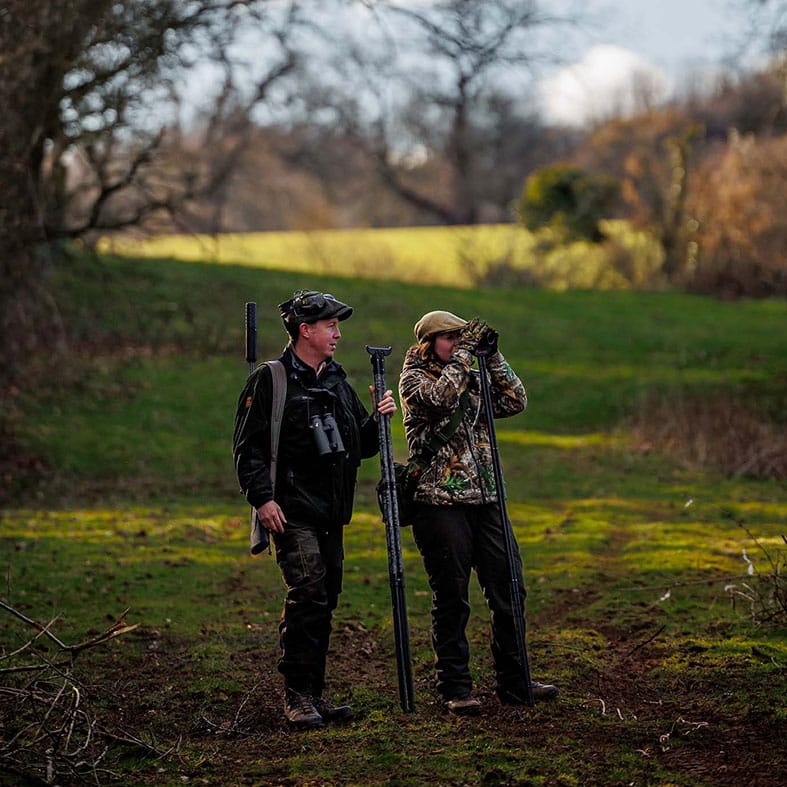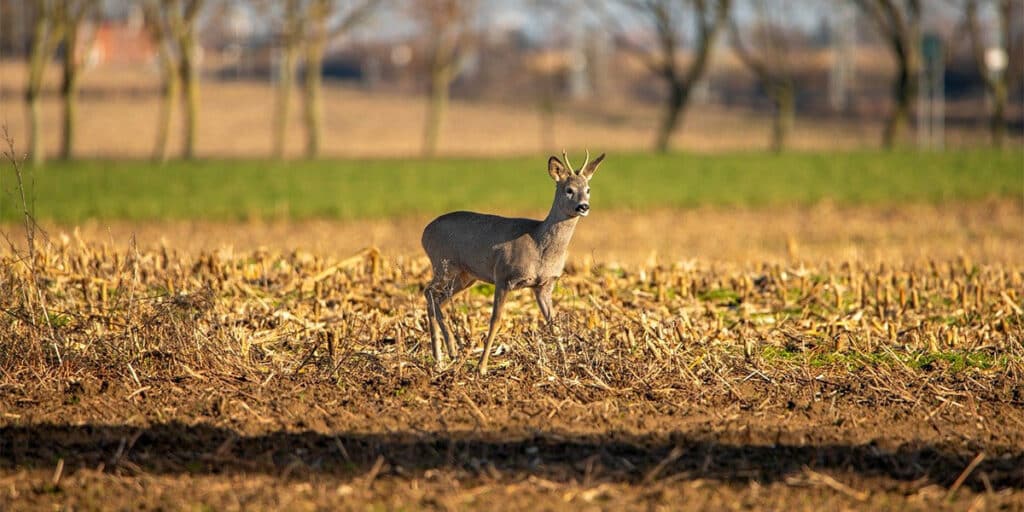
Applications now open for Defra deer chiller trailer grants
Applications for Farming Equipment and Technology Fund are now open and include grants of up to 50 per cent for deer chiller trailers.
Get information on the legal shooting season for mammals and birds in the UK.
Apply for funding for your project or make a donation today
Comprehensive information and advice from our specialist firearms team.
Everything you need to know about shotgun, rifle and airgun ammunition.
Find our up-to-date information, advice and links to government resources.
Everything you need to know on firearms law and licensing.
All the latest news and advice on general licences and how they affect you.


Martin Edwards considers why and how formal deer management plans are essential tools for those tasked with controlling deer populations.
Management plans seem to be all the rage these days and it seems that we have to produce one whatever the situation – whether it is for a business, project, habitat or species.
There are four main elements to any management plan and they form a cyclical process: set your objectives; plan how to achieve them; put the plan into action; and monitor and review to inform next steps.
The first thing to say is that this sort of thinking is not new and some would argue it’s a part of the human condition in that, whatever endeavour we undertake, we should have a goal/objective and plan how we are going to achieve it. So, for example, if you were going on a journey your objective might be to arrive at a given destination at a particular time. You would then plan your journey to achieve this. This plan may consider a whole range of alternatives and constraints – whether you fly, drive, take the train, etc., and, if you decide to drive, what route you would take and what time you would depart, allowing yourself a bit of contingency time in case of unforeseen events.
Of course, those of us who have created a deer management plan (DMP) will know that no plan ever goes exactly as expected, so foreseeing potential problems and how to mitigate against them is an important aspect of the planning stage – and is easier done at this stage rather than on the hoof when you’re trying to put the plan into action. One way to check that you are on track to achieve your objective is to set interim targets and then monitor how well you are hitting them. Keeping with the journey analogy, you may set waypoints where you need to be at a certain point at a certain time, and if you’re not then you may need to speed up or notify someone that you’re running late.
Once you arrive, you will be able to review whether or not the plan was a good one – and the simple test is, did you achieve your objective? If you got to your destination on time, then the answer is yes. Having specific, easily measured, realistic objectives that are shared/agreed with all concerned makes the review process so much easier.
The next time you have to make this journey it will be easier as you have some experience to draw upon, as the next time you will define clearer objectives, be aware of previously unknown issues, know what is realistic given your resources and probably undertake more frequent monitoring. This means that you don’t get to the end of the process not knowing whether you have achieved your goals.
How does all of this relate to deer management plans? Well, most of us will have been applying a similar process to our deer management efforts, albeit in a simplified form. This means that we will have set a cull target, planned how to achieve it, been out and shot some deer and, hopefully, recorded related details such as species, gender, date and location. And, at the end of the year, we will have reviewed whether or not we have hit our target. The only difference today is that we are increasingly being asked to commit these plans to paper rather than just doing it on the back of the proverbial fag packet or in our heads!

There are many advantages of a written DMP but the main one is communication. Deer management is rarely done in isolation and usually takes place over a property that has many uses and users. So, probably the hardest step is to agree the objectives of the plan, as each user may see the deer in a different light. The only way to iron out these differences is to talk to the owner, agent, farmer, forester, gamekeeper and anyone else with interests on the ground in question.
Where you are dealing with herds of free-roaming deer such as fallow, then it is also critical to talk to all your neighbours and probably their neighbours, too. The ideal being an agreed objective across all neighbouring properties to manage the deer population at a ‘landscape’ scale. This is one of the key values of producing a DMP, in that it encourages dialogue between all concerned, which will hopefully lead on to collaboration when it comes to implementing the plan.
Communication doesn’t end there because, having written the DMP, it then becomes a useful historical record which will allow others (when you are gone) to understand the rationale behind the actions taken at a certain point in time – which they will hopefully learn from.
Usually the DMP will involve some form of cull, with targets set for each species and sex of deer present. People tend to get bogged down in the cull planning aspect of their DMPs, particularly in trying to estimate how many deer they have. Deer census techniques are fodder for a whole other article but, suffice to say, there isn’t any one census method that will give you a 100 per cent accurate estimate of how many deer there are.

Usually, the objectives themselves will be about minimising deer impacts, whether this be to forestry, agriculture, or natural environments. Therefore, you are better off measuring these and then setting your cull effort accordingly. And it really is that simple: if the impacts are greater than acceptable, then increase the cull; if they’re OK, maintain the cull.
How you undertake the cull also requires careful consideration. Depending on the size of the cull, can you do it on your own, have you got the time? Will you need a team to help? Will foot-stalking be sufficient, or do you need high seats? What about extraction and dealing with the carcasses – have you got suitable equipment and facilities? Have you got a market for the venison you will produce? All these questions and more will require answers before you ever pull the trigger.
In theory, the simple and most rewarding part is implementing the plan and getting out into the field and actually culling some deer. But we should always keep in the back of our minds the bigger picture of what we are trying to achieve and why we are doing it, as this provides the justification for taking the life of a sentient mammal.
Record-keeping is an important part of the process, too – accurate records provide details of traceability if you are putting your venison into the food chain, but also give you lots of really useful management information based on what, when and where you have shot particular animals. In terms of monitoring progress they are vital, particularly when several stalkers are operating over a property, as they are a good way to share successes.
There are some really good smartphone apps which allow you to record all the details required in real time and then share them so that others can access the cull records at the touch of a button.
At the end of the season a formal report or meeting are good ways to communicate the results of your efforts, review whether the objectives were achieved and, if not, determine why not. This then forms the basis for setting targets for the next period and subsequent plans to achieve them.
DMPs are increasingly being required by grant authorities as a way of ensuring that public money is being allocated wisely, and they will have a format that you will have to follow; however, the principles discussed above should form the basis of these, too.
The worst thing that can happen with a deer management plan that you put all that time and effort in to producing it and then it gets forgotten and gathers dust on a shelf or sits in a computer file never to be opened. The best DMPs are live documents which people refer to regularly and can be changed if circumstances dictate.


Applications for Farming Equipment and Technology Fund are now open and include grants of up to 50 per cent for deer chiller trailers.

BASC deer officer Audrey Watson discusses how identifying woodland plant species and assessing damage can help you to carry out successful deer impact assessments.

Three key changes will come into force later this year for deer managers in Scotland.